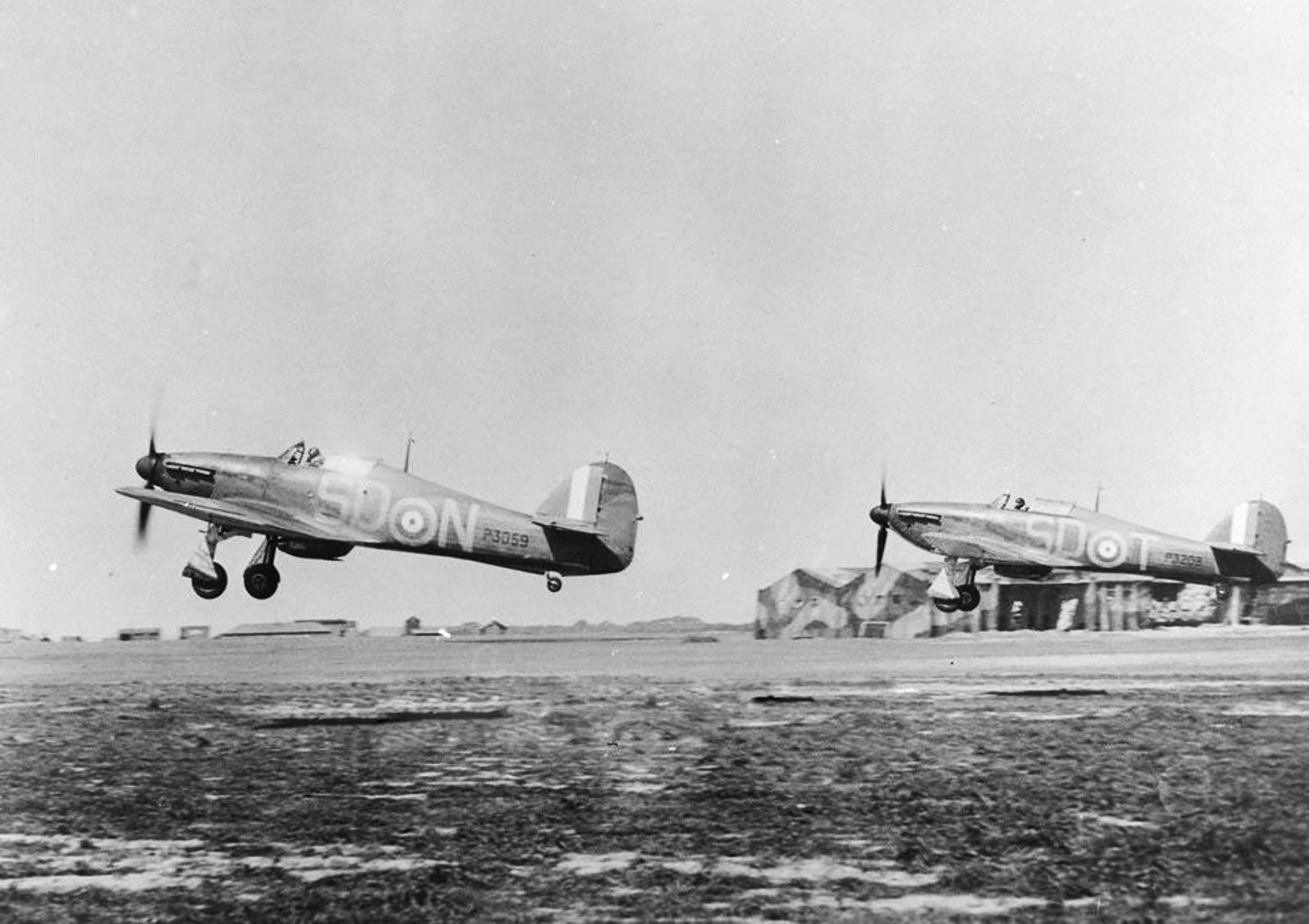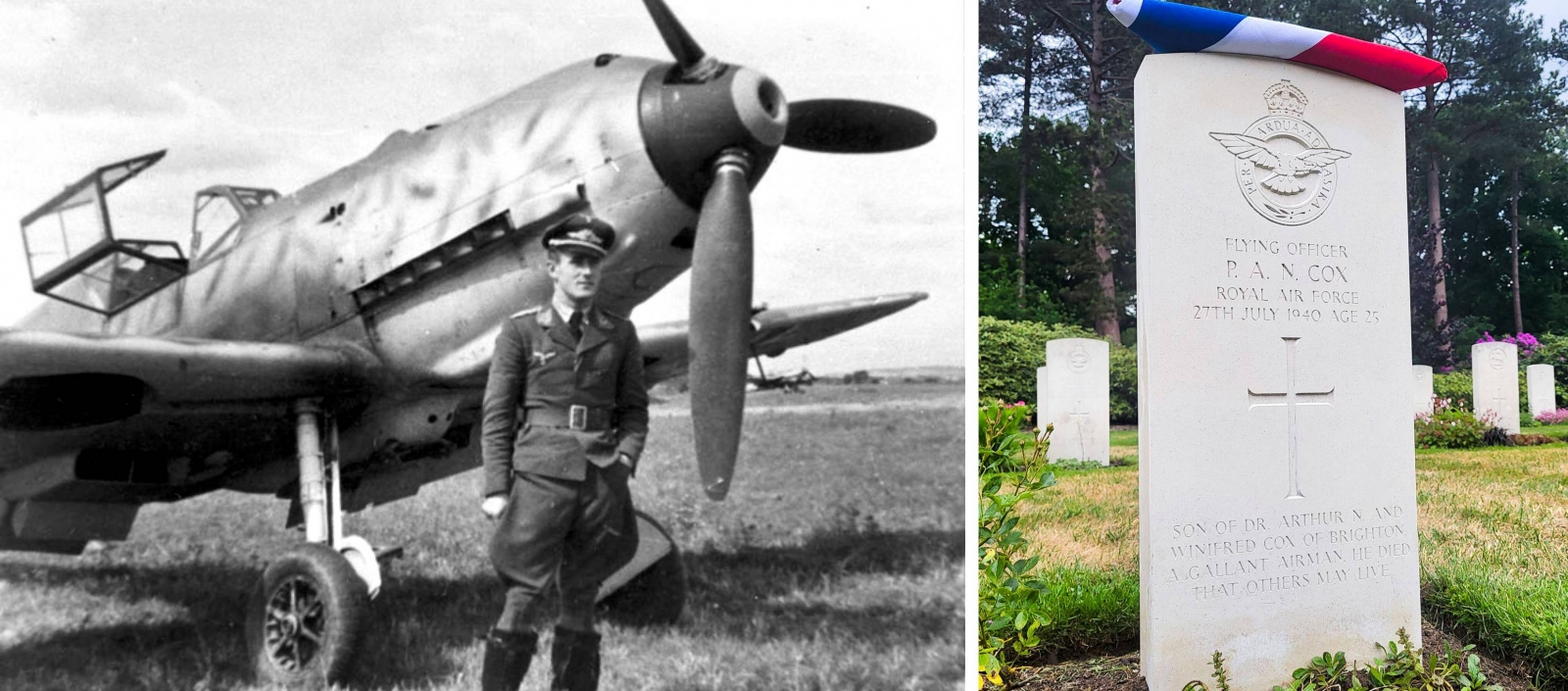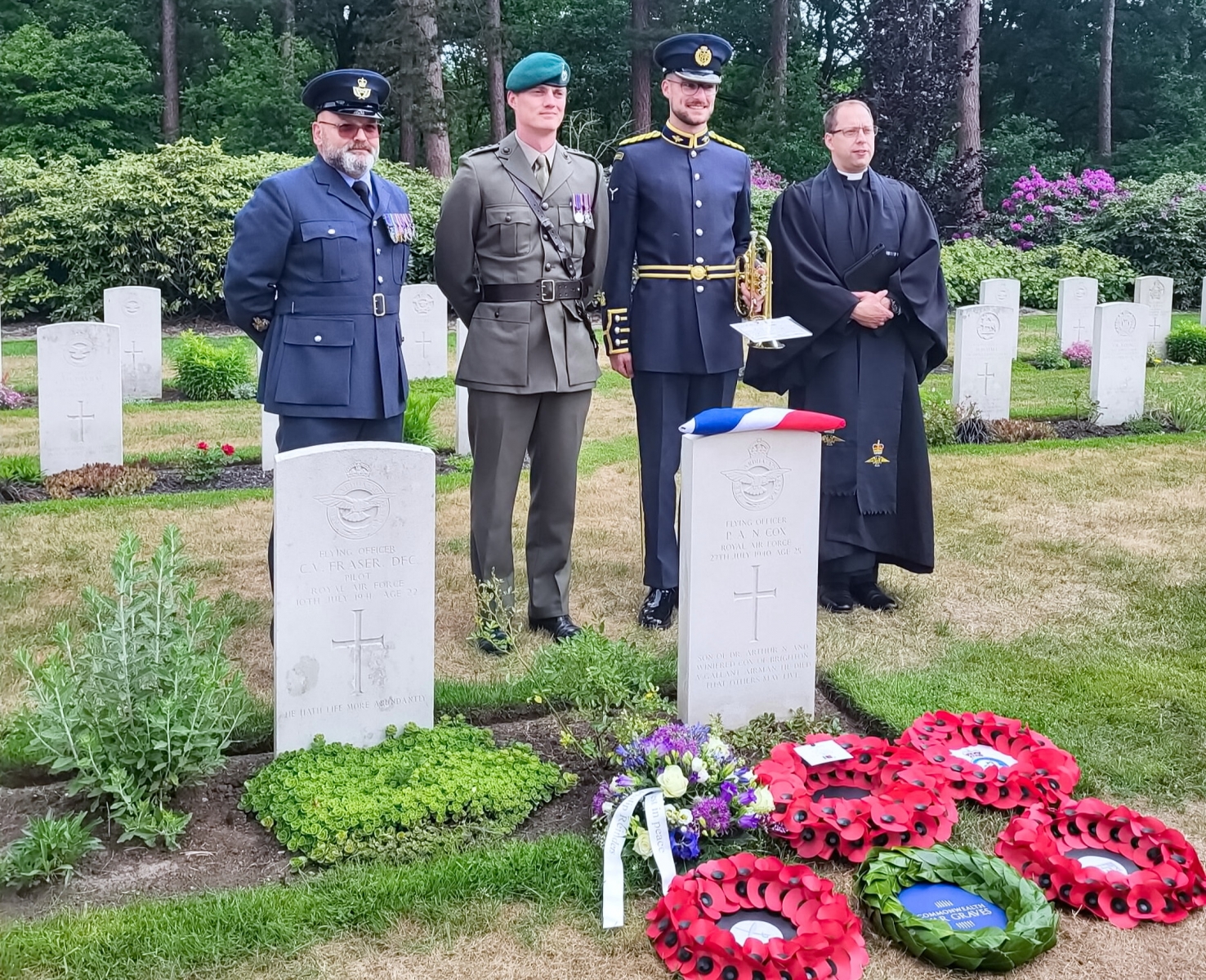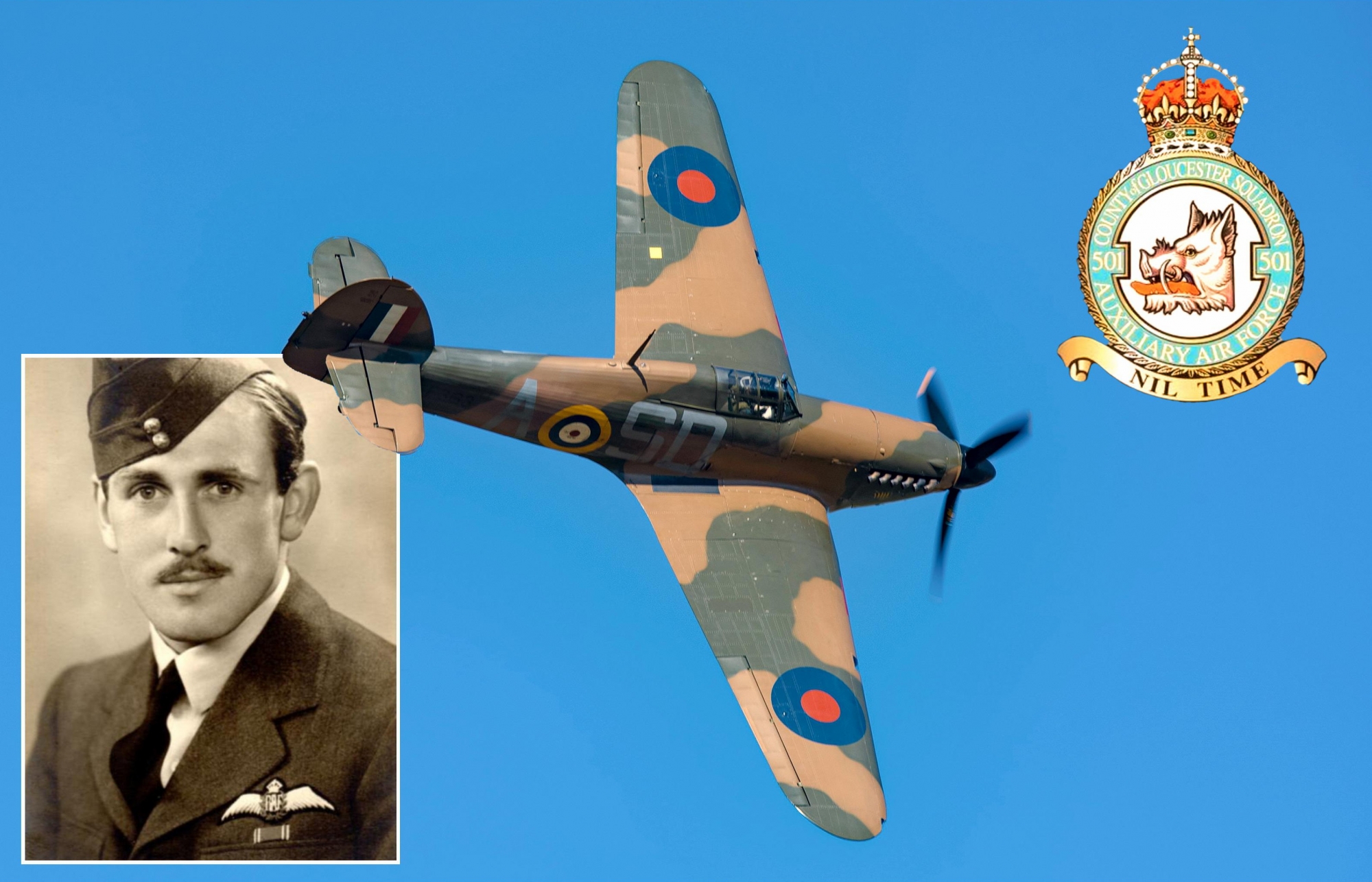“Red Leader” is no longer missing
Header image: BBMF Hurricane Mk II LF363 wore 501 Sqn AuxAF code letters on its starboard side in 2017-18. (Photo: Claire Hartley). Inset: Fg Off Philip Cox went missing on 27th July 1940 and for almost 85 years had no known grave.
On 27th July 1940, during the early and critical stages of the Battle of Britain, 12 Hurricanes of 501 (County of Gloucestershire) Squadron were scrambled from Hawkinge, taking off at 17.36 with orders to patrol Deal and Dover at 5,000 feet. The Squadron’s Red Section was led by the experienced pilot and recently appointed OC ‘A’ Flight, Flying Officer Philip Anthony Neville Cox, flying Hurricane P3808. Just seven days previously he had claimed a Me Bf 109 destroyed and shared in the destruction of another.

Sighting enemy aircraft over Dover harbour, the 501 Squadron Hurricanes became embroiled in combat with German Bf 109s. The Dover anti-aircraft guns then opened up causing the squadron’s formation to scatter. The other pilots lost sight of Cox’s Hurricane and he failed to return from the sortie. It was subsequently reported that a Hurricane had been seen to crash into the sea, but as his body was not found Cox simply remained “missing”.
Philip Cox had joined the RAF as an aircraft apprentice in 1932. He passed out as an aircraft fitter in 1935 and won a place at the RAF College Cranwell as a Flight Cadet. After graduating as a Pilot Officer in 1937, he was posted as a fighter pilot to 43 Squadron at Tangmere. Cox was not only a good pilot, but was also a talented sportsman excelling in both fencing and soccer. After various other flying postings, he joined 501 Squadron in France in May 1940, covering the evacuation of the British Expeditionary Force, before continuing to fly and fight with the squadron as the Battle of Britain began. He was 25 years old when he died.
A month after Cox went missing, a body was washed ashore at Westenschouwen on the Dutch coast. The body was buried as “an unknown British Air Force officer” and only fragmentary details of the name and service number were recorded. When wartime graves were consolidated into the Bergen-op-Zoom War Cemetery in 1946, those scant records were missed, leaving his grave unmarked by name. Meanwhile Philip Cox was remembered on the Runnymede memorial.
After initial research into the identity of the unknown airman in the Bergen-op-Zoom War Cemetery by Dutchman Philip Reinders, the Ministry of Defence’s Joint Casualty and Compassionate Centre (JCCC) – known informally as the MOD War Detectives – led a lengthy investigation to establish the airman’s identity. Collaborating with the RAF Air Historical Branch and the Commonwealth War Graves Commission (CWGC), researchers examined Dutch and German wartime archives and cross-checked survival and loss records. They discovered that although another serviceman named Cox had gone missing, only Flying Officer P.A.N. Cox matched the date and location of the crash, eliminating any doubt. Fergus Read, a Commemorations Case Officer at the CWGC, noted that the identification process drew on sources that had never before been connected, including eyewitness accounts, crash-site reports and local wartime documentation. The investigation also revealed that Cox had been shot down by a Bf 109 flown by Luftwaffe pilot Leutnant Horst Marx. The German combat report stated that the first burst of gunfire from behind and below Cox’s Hurricane set it on fire and it immediately dived blazing into the Channel.

On 4th June 2025, in a special service at the Bergen-op-Zoom War Cemetery, and almost 85 years since his death in action, Flying Officer Cox’s grave was rededicated with a new Commonwealth War Graves headstone bearing his name. Family members from the UK were present alongside Dutch dignitaries and military representatives, and wreaths were laid to mark the occasion.

The rededication service was conducted by Squadron Leader Reverend Jonathan Steward, the Sation Chaplain at RAF Odiham, who spoke of the significance of finally engraving Cox’s name on his headstone. “Having his name forever written in stone is more than symbolic,” Reverend Steward said. “It shows our commitment to honour and commemorate his sacrifice, ensuring it will not be forgotten.” Tracey Bowers, a caseworker with the JCCC, expressed gratitude for the tip that first pointed investigators toward the original Dutch burial records. “This brave officer served his country for eight years,” she said. “Thanks to painstaking research, Flying Officer Cox will now be remembered by name, and his grave will be cared for by the CWGC in perpetuity.”
LEST WE FORGET







